Results 5,481 to 5,490 of 12096
Thread: Anandtech News
-
11-10-15, 12:30 PM #5481
Anandtech: ARM Announces ARMv8-M Instruction Set For Microcontrollers – TrustZone Com
Kicking off today in Santa Clara, California is ARM’s annual developer conference and expo, TechCon. Although ARM announces products year-round, they always have a couple of announcements reserved for TechCon and this year is no exception. Being unveiled at 2015’s show is the ARM Cortex-A35 CPU and the ARMv8-M instruction set architecture, the latter being the focus of this article.
As a brief bit of background since we don’t extensively cover ARM’s microcontroller efforts, in recognition of the unique power and performance requirements for microcontrollers, ARM produces a separate instruction set architecture and lineup of CPU cores specifically for these kinds of products. These are the ARM-M ISAs and the Cortex-M series of CPUs respectively. The ARM-M ISAs can be thought of as a cut-down version of ARM’s full ISAs, paring down the features to allow for simpler CPUs as needed in microcontrollers.
At this year’s TechCon, ARM is announcing the latest iteration of the ARM-M ISA, the ARMv8-M ISA. Unlike the full ARMv8 (i.e. ARMv8-A) ISA that we’re accustomed to seeing implemented in products like ARM’s Cortex-A57 CPU, Apple’s Twister CPU, and other products, ARM’s focus on their microcontroller ISA is a bit narrower. Here the focus isn’t on performance or memory space – factors that led to the expansion to 64-bit CPUs with ARMv8-A AArch64 – but rather on continuing with microcontroller-suitable 32-bit CPUs while investing in the new features ARM sees as important over the next half decade or so.
To that end, ARM’s big focus with ARMv8-M is on security. Key to that is that ARM’s TrustZone technology is coming to microcontrollers for the first time.
Previously only available to ARM-A architecture CPUs, TrustZone is now being extended to ARM based microcontrollers. And like their bigger siblings, ARM’s aim here with TrustZone is to lay the groundwork for their customers to build highly secure devices, for all the benefits and drawbacks such a device entails. This includes protecting cryptography engines and certain stored assets (e.g. the secure enclave) against attack, locking down systems to prevent userland applications from breaking into the operating system itself, and various degrees of DRM (one example, as ARM gives is, is firmware IP protection).
ARM over the last few years has been betting increasingly heavy on wearables and ioT, so the announcement of ARMv8-M and their focus on TrustZone is consistent with those bets. ARM microcontrollers are used in a number of devices as the sole processor, and in more devices still as a specialized processor working alongside a full ARMv8-A application processor. So as ARM microcontroller use increasingly expands from industrial devices and simple black boxes to complex devices that end-users interact with, there is a need for better security to follow into these products.
With that said, as microcontrollers are the lowest of the low power devices in the ARM ecosystem, ARM had needed to take some care in implementing that security within the constraints of a microprocessor. Seeking to avoid compromising response time or efficiency, the ARMv8-M TrustZone retains the deterministic properties developers need on such devices, so a TruzeZone interrupt has a low and deterministic latency to the operation. Similarly, the core of the implementation is based on switching states rather than hypervisors, avoiding the overhead and higher resource requirements of the latter.
Of course like the ARMv8-M ISA itself, TrustZone is an ISA and a model for just the CPU. To flesh out the full technology ARM is also making a couple of other ARMv8-M announcements. The first is that the company is announcing the ARM Advanced Microcontroller Bus Architecture 5 (AMBA 5) Advanced High-performance Bus 5 (AHB5) specification. The main system bus for ARM’s microcontrollers, AHB5 goes hand-in-hand with TrustZone to extend the security model to the rest of the SoC. Through AHB5, TrustZone microcontroller CPUs can interact with both trusted and non-trusted devices, including trusted segments of SRAM and flash memory as required for implementing separated storage.
Also being announced today is TrustZone CryptoCell, ARM’s implementation of a TrustZone crypto block, which provides the fixed function hardware necessary for a full TrustZone implementation. The TrustZone CryptoCell includes a secure enclave, key generation/provisioning/management, and the actual fixed function hardware crypto engines.
Ultimately with today’s ARMv8-M and associated security announcements, ARM is looking to further flesh out the ARM ecosystem to support full security at every level and every device from end to end. ARM believes that developers now need an easier and more standardized way to implement security on their microcontroller-equipped devices, and this is what ARMv8-M will provide.
Finally, and not all that surprising, today’s announcement of the ARMv8-M ISA is just for the ISA itself, and not for any specific CPUs. ARM has traditionally announced new Cortex CPU designs separately from the ISA, and in this case it’s no different. To that end ARM isn’t specifically talking about when we’ll see ARMv8-M Cortex-M designs announced, but after today’s announcement it’s safe to say that it’s only a matter of time.
Gallery: ARMv8-M Announcement Slide Deck





More...
-
11-10-15, 04:31 PM #5482
Anandtech: Qualcomm Snapdragon 820 Experience: HMP Kryo and Demos
While the Snapdragon 820 has had a number of announcements about various aspects of the SoC, some details have been mostly left to the imagination. Today, Qualcomm held an event to release some details about Snapdragon 820, but also to show off what can be enabled by Snapdragon 820. Some of the main details released today include some estimates of power, and some additional disclosure on the Kryo CPU cores in Snapdragon 820.
In power, Qualcomm published a slide showing average power consumption using their own internal model for determining days of use. In their testing, it shows that Snapdragon 820 uses 30% less power for the same time of use. Of course, this needs to be taken with appropriate skepticism, but given the use of 14LPP it probably shouldn’t be a surprise that Snapdragon 820 improves significantly over past devices.
The other disclosures of note were primarily centered on the CPU and modem. On the modem side, Qualcomm is claiming 15% improvement in power efficiency which should eliminate any remaining gap between LTE and WiFi battery life.
On the CPU side, while the claims of either doubled performance or power efficiency have been discussed before, new details on the CPU include that the quad core CPU is best described as an HMP solution with two high-performance cores clocked at 2.2 GHz and two low-power cores clocked at 1.6 or 1.7GHz when looking at previous Qualcomm SoCs with two clusters that share an architecture. Qualcomm also disclosed that the CPU architectures of both clusters are identical, but with differences in cache configuration. However, the differences in cache configuration weren’t disclosed. I wasn't able to get an answer regarding whether this is an ARM big.LITTLE design that uses CCI-400 or CCI-500, but given that there's an L3 cache shared between clusters it's more likely that this is a completely custom HMP architecture.
In addition to these disclosures, we saw a number of demos. Probably the single most interesting demo shown was Sense ID, in which it was shown that fingerprint sensing worked properly through a sheet of glass and aluminum. To my recollection both the glass and aluminum were 0.4mm thick, so the system seems to be relatively robust. For those unfamiliar with Sense ID, rather than relying of high-resolution capacitive touch sensing the system uses ultrasonic sound waves to map the fingerprint, which allows it to penetrate materials like glass and metal and improves sensitivity despite contaminants like water and dirt.
One area of note was that Qualcomm is now offering their own speaker amp/protection IC that would compete with ICs like the NXP TFA9895 that are quite common in devices today. The WSA8815 chip would also be able to deliver stereo sound effects in devices with stereo front-facing speakers. It seems that the primary advantage of this solution is cost when bundled with the SoC, but it remains to be seen whether OEM adoption would be widespread.
One of the other demos was improved low light video and photos by using the Hexagon 680 DSP and Spectra 14-bit dual ISP. The main area of interest in this demo was improved visibility of underexposed areas by boosting shadow visibility, while also eliminating the resulting noise through temporal noise reduction.
On the RF side, in addition to showing that the Snapdragon 820 modem is capable of UE Category 12/13 LTE speeds Qualcomm also demonstrated that the Snapdragon 820 is capable of dynamically detecting WiFi signal quality based upon throughput and other metrics that affect VOIP quality and seamlessly handing off calls from WiFi to LTE and back. We also saw a demo for Qualcomm’s closed-loop antenna tuning system which allows for reduced impedance mismatch relative to previous open-loop antenna tuners which loaded various antenna profiles based upon things like touch sensing of certain critical areas.
More...
-
11-10-15, 06:00 PM #5483
Anandtech: NVIDIA Announces Jetson TX1 - A Tegra X1 Module & Development Kit
Although NVIDIA’s original plans for Tegra haven’t quite panned out as NVIDIA wanted to – at this point even tablet wins are few and far between – the company has continued to invest in developing their line of ARM SoCs and products built around them such as the SHIELD platform. One of the less public investments NVIDIA has put into Tegra has been on the development kit side; starting with Tegra K1 in 2014, NVIDIA began releasing a full development kit for the Tegra platform. Dubbed Jetson, the TK1 Jetson was a full commercial off the shelf Tegra system containing the SoC, memory, storage, a Linux distribution pre-configured for the board, and all of the necessary I/O interfaces a developer could want. With Jetson NVIDIA was looking to bootstrap the development of products around Tegra K1 by giving developers the means to easily prototype their devices around the dev board, before going into traditional full production.
However since it was a full COTS implementation of Tegra K1, something unexpected happened for NVIDIA: developers started using Jetson TK1 outright as a production board. For small developers doing similarly small product runs, or just projects that didn’t require a highly integrated solution (e.g. embedded systems as opposed to mobile devices), some developers would just stick with Jetson since it meant they could skip system hardware development and focus on software and/or peripherals.
Moving on to the present, after announcing their latest-generation Tegra X1 SoC at CES 2015 and integrating it into some of their own products over the past several months (Drive PX, SHIELD Console, etc) NVIDIA is now rolling out an updated Jetson product based on the X1. The latest Jetson, which NVIDIA is appropriately calling the Jetson TX1, is designed to refresh the platform with the more powerful Tegra X1 SoC and its full ARMv8 AArch64 CPU + Maxwell GPU capabilities. At the same time however, based on their unexpected success as a COTS product, NVIDIA has redesigned Jetson to better serve the COTS market while also continuing to serve the Tegra developer kit market.
The end result is that for its TX1 iteration Jetson has been split in two, and now comes as stand-alone compute module with a separate carrier board for I/O. The Jetson TX1 module itself – which is for all practical definitions Jetson TX1 in its entirety – contains a full working TX1 system. NVIDIA tells us that Jetson TX1 should offer 2-3 times the performance of Tegra K1, particularly where the GPU is involved, and while we don’t have the CPU clockspeed some quick math on NVIDIA’s 1 TFLOPS claim puts the GPU clockspeed at 975MHz (assuming FP16) with the complete module rated for approximately 10W.
Otherwise along with the TX1 SoC, NVIDIA has attached 4GB of LPDDR4-3200, a 16GB eMMC flash module, a 2x2 802.11ac + Bluetooth wireless radio, and a Gigabit Ethernet controller. By providing a complete TX1 system on a board a bit smaller than a credit card, NVIDIA is looking to further the COTS usage of Jetson by giving product developers a smaller dedicated board specifically designed for COTS usage and quick integration into shipping products.
Meanwhile I/O connectivity is now provided by a separate board, be it a product-specific developer design or the official Jetson TX1 carrier board, with the Jetson TX1 using a 400 pin board-to-board connector to attach to other devices. Similar to the original Jetson TK1, the official Jetson TX1 carrier board is designed to offer TX1 as a development kit and contains a full suite of I/O including Ethernet, WiFi + BT antenna connectors, HDMI, USB, M.2, a large number of GPIOs, a camera serial interface with 5MP camera, and a PCIe 2.0 x4 slot. Relative to Jetson TK1, the newer TX1 includes more GPIOs, the camera, a full-size PCIe interface, and it can now work from a more traditional 3.3v power supply.
Moving on, not unlike TX1’s discrete GPU counterparts, with the Jetson TX1 platform NVIDIA is strongly focusing on machine learning and autonomous machines. The company believes that machine learning is the next great frontier for GPUs – both discrete and integrated – and is capitalizing on neural net research that has shown GPUs to be capable of both quickly training and quickly executing neural nets. This is an important differentiator for NVIDIA given their strengths in GPU development (both from a tech perspective and overall SoC GPU performance), and because it is a market that they feel no one else is truly aiming for (or at least competitive in) at this time. The Drive PX system already uses TX1 on this basis, and now with Jetson TX1 NVIDIA is looking to extend that relationship to a much wider group of developers.
Similar to Jetson TK1 then, Jetson TX1 comes with a suite of software and SDKs in order to simplify the development process and to give developers a good starting point for implementing machine learning. Along with the Linux for Tegra environment, NVIDIA is including their cuDNN neural network library and VisionWorks computer vision toolkit. Coupled with other APIs and software packages such as OpenVX and various neural network systems, NVIDIA is aiming to make the Jetson SDK an ecosystem in and of itself.
Finally, along with today’s announcement NVIDIA also unveiled the pricing and availability of the Jetson TX1 module and the full development kit. NVIDIA will begin taking pre-orders for the dev kit on the 12th with kits to start shipping as soon as the 16th, and will sell for $599 retail/$299 education. The dev kits will contain the module, carrier board, camera board, a heatsink-fan for cooling (which we’re told is grossly overpowered for TX1), and all of the necessary cables. Meanwhile the stand-alone Jetson TX1 module for use in commercial products will go on sale in Q1 of 2016, priced at $299 in 1K quantities.
Gallery: NVIDIA Jetson TX1 Press Deck





More...
-
11-11-15, 06:44 AM #5484
Anandtech: The iPad Pro Preview: Taking Notes With iPad Pro
For the past week, I’ve been working on a review of the iPad Pro. For better or worse it has been a very quick week and I’ve been working on the review right up to the embargo time. Rather than rushing out our review of Apple's first large-format tablet in an incomplete state, I'm going to hold it back so that we can get it right and produce the kind of high-quality article that we're known for.
Instead for today's embargo I want to take a more personal look at one segment of the iPad Pro's new features as a preview of things to come. The iPad Pro is a tablet of several firsts for Apple - their first large-format tablet, their first tablet with Apple's A9X SoC, and their first tablet clearly geared towards productivity as opposed to content consumption - and as a result one area that’s worth discussing in depth is whether or not the iPad Pro is useful to people that might not have wanted or needed an iPad before.
More...
-
11-12-15, 02:46 AM #5485
Anandtech: Samsung Announces Exynos 8890 with Cat.12/13 Modem and Custom CPU
In an unexpected surprise annoucement, Samsung today revealed its new generation flagship SoC - the Exynos 8. The Exynos 8890 to be more specific, is the successor to the Exynos 7420 that we've come to know very well in this year's Galaxy flagships such as the Galaxy S6 or the Note 5.
The Exynos 8890 is still an 4+4 big.LITTLE design using four Cortex A53 cores as the little cores, but for the first time we see Samsung's custom developed CPU architecture deployed in silicon. The new core, officially called the Exynos M1, is the first fruit of years-long efforts by Samsung's Austin R&D Center to try to create an in-house CPU architecture. What we do know of the M1 is that it's still very similar to ARM's big core architectures (And thus might be a derivative) such as the A72: It's still a 3-wide OoO design with the same amount of execution pipelines and similar, although not quite identical pipeline stages on the execution units.
Samsung is claiming the Exynos 8890 will provide up to 30% higher performance and 10% better power efficiency than the Exynos 7420's - although the wording is a bit vague and doesn't specify if we're talking about a pure architectural comparison or actual implementation comparison, as previous PR numbers on the Exynos 7420 also didn't quite represent the full improvements of the chipset.
Samsung follows MediaTek's example by dropping the use of ARM's CCI IP in favour of designing their own cache-coherent interconnect fabric aptly named SCI (Samsung Coherent Interconnect). It seems that vendors are keen to try to improve their SoC architectures by designing fully optimized SoC fabric solutions and I guess Samsung saw the need to differentiate in this regard.
On the GPU side, we see usage of an ARM Mali T880M12. This is the biggest Mali core implementation to date and increases the number of cores by 50% compared to the Exynos 7420's MP8 configuration. Keeping in mind that the T880 also increases ALU pipelines per core by 50%, we're looking at an 2.25x increase in computational power assuming Samsung kept the clock frequencies equal. Alternatively, they could go lower in frequency for much improved power efficiency. Samsung advertises 4K as an option for this SoC so likely we're looking at a very powerful GPU setup.
Lastly, but not least, is that announcement that the Exynos 8890 is part of Samsung's ModAP lineup, meaning this is a part with a modem. The new modem supports LTE Category 12 download speeds with up to 3x carrier aggregation up to 600Mbps or uploads speeds up to 150Mbps on Cat. 13 with CA. This effectively makes the new Shannon modem on the 8890 equal Qualcomm's Snapdragon 820 modem capabilities. Until further future confirmation on the matter, I fail to use the "integrated" word in regards to the modem due to Samsung's new product page presenting a graphic representing the modem/AP in a way that seems strikingly similar to a SiP (System-in-Package) solution, as opposed to an on-die solution.
The Exynos 8890 is announced to enter mass production in late 2015. With just six weeks left in the calendar year this likely means we're already seeing silicon being etched as we speak, just in time for Samsung's new Galaxy flagship early next year.
More...
-
11-12-15, 07:22 AM #5486
Anandtech: Build-A-Rig Round 2, SilverStone vs. Crucial: The $800 PC Showdown
We’re back again for the final phase of our second Build-a-Rig competition. For this round we are doing a theme relevant to many a younger enthusiast: back to school computers. In this Round we invited both Tony Ou from SilverStone and Jeremy Mortensen from Crucial to each spec out an $800 computer for the back to school season.
Earlier we interviewed both representatives to discuss their own background and also to find the motives behind the configurations they submitted. Last week we got to dive into the experience of building these computers, and got to see what it is like to put these machines together and how easy they are to work on for those that like to get their hands dirty.
Now for the final part of this round of Build-a-Rig we have the showdown: running our benchmark suite and seeing how these machines compare to each other. The $800 budget this time is substantially tighter than what we saw in our previous round, which when coupled with both machines being built on mITX platforms for portability brings its own constraints, and as a result we can see completely different trade-offs being made on both sides.
More...
-
11-12-15, 04:31 PM #5487
Anandtech: Windows 10 Fall Update Available: Filling Out The Business Gaps
Today Microsoft started rolling out their first big update to Windows 10. When Windows 10 first launched in July, there was a commitment to moving Windows from optional updates to Windows as a Service, with constant, continuous feature updates and fixes. We’ve seen quite a few of the fixes already in the cumulative updates pushed out over the last few months, and today brings the first big update to the Core OS itself.
Much of this update is focused on speed and polish, with many of the business features that were initially promised being rolled out now. The update process itself is more like how the Insider Builds are rolled out, and people that see the update happening will get the same style of update as the initial Windows 10 rollout, rather than just a typical Windows Update style reboot.
On the end user side, the changes are subtle, but numerous. All of these changes have been rolled out to the Windows Insiders over the last couple of months, so there are no real surprises here. But they are certainly welcome.
One annoyance with Windows 10 when it first debuted was that any time you right-click somewhere in the system, you would get a completely different context menu depending on where you did the action. It was not a huge issue, but it certainly was jarring and make the system look less than polished. With this update, Microsoft has now moved to one style of context menu across all locations. It’s a small but welcome change, and makes the operating system feel more coherent.
Start MenuTask BarMicrosoft’s new browser has picked up some new features that somehow missed the cut on the initial launch. You can now do basic tasks like right click a file and Save As, which is so basic of a task that it really points to how new Edge really is. Microsoft has also enabled Tab previews, so if you hover over one of your tabs, a small window will pop up showing you what’s on that page. It’s very useful if you have a lot of tabs open. I’ve also found Edge to be more stable than before, although it is still not perfect. One key feature that is not part of this update is the promised extensions model, and that has been moved to 2016 for now. This is very much necessary to give Edge any sort of chance against the extensibility of Chrome and Firefox, so hopefully this gets bumped up on the priority list.
Cortana also gains the ability to understand written notes using a stylus. Cortana has also had her market expand to include Japan, Australia, Canadian English, and India in English, with a customized experience for each culture.
Now in Canada!Skype is now offered with standalone Universal Windows Apps for text, video, and phone. People who prefer to use the monolithic Skype will still have that option, but Microsoft is trying to emulate the more simplistic single use app model that has been successful on iOS with iMessage and FaceTime, as well as Google Hangouts. This is still in the consumer preview stage, but it is an important part of their strategy to get a proper Skype client across all of their platforms. For those interested in kicking the tires on this, I would suggest checking out the Skype blog for details.
The Start Menu also gets some tweaks, with the ability to add more tiles. This should help a lot with issues I had on the Surface Tablets with their 3:2 aspect ratio when using them in Tablet Mode. I found a lot of wasted width on the Start screen, and this should help a lot. It gives you the ability to add a fourth medium tile to a column, meaning you can now have two Large tiles on the same row. In addition, the theme can now be chosen automatically from the background picture, and you can do more customization of the colors.
Most of the changes are small, but should lead to a better experience. The bigger changes are going to affect business users, who now get access to some of the cool features for Windows 10 in the business world. Windows Update for Business is now available to control and manage updates within a company, and Windows Store for Business is a more powerful store which will let businesses manage which apps are available to employees, be a home to custom line of business apps, and connect them with management solutions.
For device management, today’s update brings Mobile Device Management (MDM) to the entire range of Windows 10 devices, including PCs, tablets, phones, and IoT. For businesses with more complex management, that will of course continue to work as well.
Companies can now leverage Azure Active Directory to join devices to the Azure based domain. For large, diverse operations, this can cut down on a lot of the complexity with having to create and manage a domain, and being that it’s a cloud service, connectivity should be much simpler.
Not available yet, but coming soon, is Enterprise Data Protection, which will allow enterprises to manage and maintain control of data, even if it leaves their hands, and allow a more granular approach to separating corporate and consumer data.
For anyone already on the Insider Program, this update came as 10586 a little while ago, and Windows is now at version 1511, which is November 2015, and future updates should continue this format. There are a lot of little changes brought about, and those that want to update right away should just be able to check with Windows Update for a download.
Source: Windows Blog
More...
-
11-12-15, 09:30 PM #5488
Anandtech: Xbox One Gets Windows 10 Underpinnings With New Xbox One Experience
Today the New Xbox One Experience began rolling out, and with it comes a big change in not only the look and feel of the Xbox One’s Dashboard, but it also brings Windows 10 to Microsoft’s gaming console. The new update brings about a big shift in the user interface, as well as some very anticipated features.
The first thing you’ll notice is the new interface, which departs from the horizontal scrolling of the Windows 8 style interface, to something that fits more into the Windows 10 theme. In fact, the new dashboard is very similar to the Windows 10 Xbox app, including the navigation at the left, and vertical scrolling to access pinned content. Unfortunately, there is still a good 20-25% of the right side of the screen devoted to promotional items, which takes up too much of the on-screen real estate. The old dashboard would also show you the last several items that you did, which was nice since you often did things like Netflix and TV a lot. But the new experience just shows a single item other than the current active task, so you need to scroll down to find them. Luckily when you do, the items are bigger, and offer choices like Watch Live TV or Find TV.
Not all is bad though. The new experience is a lot quicker for social aspects like chatting and finding groups for games. Bringing up the Xbox guide while in a game is much quicker and doesn’t slow the experience to a halt. They’ve been improving on these aspects over the last year or so since they have been one of the top items on the Feedback forum.
I’m not in love with the new UI yet, but maybe I just need some time to get used to it. I had been using the previous UI for almost two years, and I think we’re all a but stubborn about change.
One thing that looks much better though is the new OneGuide, despite it constantly asking me to plug in my Kinect (which stopped working a couple of weeks ago). The guide comes up much quicker than the previous incarnation, and it’s been subtly chanted to make it easier to use I think. I still wish there was some way to customize the channels, since I don’t get every channel in the listing. Perhaps someone has a better way to do this, but I’ve been setting the channels I do get as favorites, and then just using favorites instead of the guide. This kind of functionality was always part of Media Center, so it’s a bit surprising it doesn’t seem to be there. The new guide will work with either cable, which can be controlled through IR blasting on the Kinect, or you can hook the Xbox up to a TV tuner if you want to cut the cord. And in case you missed it, this is all set up to add DVR capabilities next year.
I think the big thing with today’s update though is the inclusion of backwards compatibility with Xbox 360 games. Out of the gate, Microsoft is support 104 Xbox 360 titles, with quite a few very popular games already on the list. More will be added over time. The Xbox 360 is actually running in a virtualized environment, so when you are in one of the 360 games, all of the menus and whatnot are actually the Xbox 360 menus, but you can still do things like record game clips and chat using the Xbox One interface. This was a much requested feature, and it expands the capabilities of the Xbox One, as well as the available software titles.
There are more features coming down the line as well. Cortana will be coming as a voice assistant, and it should help a lot over the very basic voice commands the Xbox One uses now. I’ve heard that Cortana will work with either Kinect, or with a headset, which is good since not everyone that might want to use it would own Kinect. Also, the store on Xbox One is being unified with the Windows 10 store, which will add the ability to use Universal Windows Apps tailored for the TV interface. That should open up a whole bunch of opportunities for developers for content consumption apps.
This is easily the biggest change to the Xbox One since it was launched, but over the last two years it has come a long way in terms of features and usability. Microsoft seems to be keen on keeping these updates coming too. I’ll need more time with the new experience to see whether or not I prefer it though. Change can be difficult.
Source: Major Nelson blog
Xbox One Backward Compatibility List
List from majornelson.com
Content Title Content Type Publisher Assassin’s Creed II Xbox One Game Ubisoft Banjo-Kazooie: Nuts & Bolts Xbox One Game Microsoft Studios Borderlands Xbox One Game 2K Games CastleStorm Xbox One Game Microsoft Studios Condemned: Criminal Origins Xbox One Game Sega DiRT 3 Xbox One Game Codemasters DiRT Showdown Xbox One Game Codemasters Dungeon Siege III Xbox One Game Square Enix Fable II Xbox One Game Microsoft Studios Fallout 3 Xbox One Game Bethesda Softworks Gears of War Xbox One Game Microsoft Studios Gears of War 2 Xbox One Game Microsoft Studios Gears of War 3 Xbox One Game Microsoft Studios Gears of War: Judgment Xbox One Game Microsoft Studios Just Cause 2 Xbox One Game Square Enix Kameo: Elements of Power Xbox One Game Microsoft Studios LEGO Pirates of the Caribbean: The Video Game Xbox One Game Disney Interactive Studios LEGO Star Wars: The Complete Saga Xbox One Game Disney Interactive Studios Mass Effect Xbox One Game Microsoft Studios Mirror’s Edge Xbox One Game Electronic Arts Operation Flashpoint: Dragon Rising Xbox One Game Codemasters Perfect Dark Zero Xbox One Game Microsoft Studios Supreme Commander 2 Xbox One Game Square Enix Tom Clancy’s Rainbow Six Vegas Xbox One Game Ubisoft Tom Clancy’s Rainbow Six Vegas 2 Xbox One Game Ubisoft South Park: The Stick of Truth Xbox One Game Ubisoft Tron: Evolution Xbox One Game Disney Interactive Studios Viva Piñata Xbox One Game Microsoft Studios Viva Piñata: Trouble In Paradise Xbox One Game Microsoft Studios A Kingdom for Keflings Arcade Microsoft Studios A World of Keflings Arcade Microsoft Studios Alien Hominid HD Arcade Microsoft Studios Asteroids & Deluxe Arcade Atari Banjo-Kazooie Arcade Microsoft Studios Banjo-Tooie Arcade Microsoft Studios BattleBlock Theater Arcade Microsoft Studios Bejeweled 2 Arcade Microsoft Studios Bellator: MMA Onslaught Arcade 345 Games Beyond Good & Evil HD Arcade Ubisoft Blood of the Werewolf Arcade Midnight City BloodRayne: Betrayal Arcade Majesco Entertainment Call of Juarez Gunslinger Arcade Ubisoft Castle Crashers Arcade Microsoft Studios Centipede & Millipede Arcade Atari Crazy Taxi Arcade Sega Deadliest Warrior: Legends Arcade 345 Games / Spike Games Defense Grid: The Awakening Arcade Microsoft Studios Discs of Tron Arcade Disney Interactive Studios Doom Arcade Bethesda Softworks Doom II Arcade Bethesda Softworks Earthworm Jim HD Arcade Microsoft Studios Feeding Frenzy Arcade Microsoft Studios Feeding Frenzy 2: Shipwreck Showdown Arcade PopCap Games Golden Axe Arcade Sega Halo: Spartan Assault Arcade Microsoft Studios Hardwood Backgammon Arcade Microsoft Studios Hardwood Hearts Arcade Microsoft Studios Hardwood Spades Arcade Microsoft Studios Heavy Weapon Arcade Microsoft Studios Hexic HD Arcade Microsoft Studios Ikaruga Arcade Microsoft Studios Jetpac Refuelled Arcade Microsoft Studios Joy Ride Turbo Arcade Microsoft Studios Lode Runner Arcade Microsoft Studios LUMINES LIVE! Arcade Microsoft Studios Metal Slug 3 Arcade SNK PLAYMORE Metal Slug XX Arcade SNK PLAYMORE Might & Magic Clash of Heroes Arcade Ubisoft Missile Command Arcade Atari Monday Night Combat Arcade Microsoft Studios Monkey Island 2: Special Edition Arcade Disney Interactive Studios Monkey Island: Special Edition Arcade Disney Interactive Studios Ms. Splosion Man Arcade Microsoft Studios Mutant Blobs Attack!!! Arcade Midnight City N+ Arcade Microsoft Studios NBA JAM: On Fire Edition Arcade Electronic Arts NiGHTS into dreams… Arcade Sega Pac-Man: Championship Edition Arcade Bandai Namco Pac-Man: Championship Edition DX+ Arcade Bandai Namco Perfect Dark Arcade Microsoft Studios Phantom Breaker: Battle Grounds Arcade Mages. Pinball FX Arcade Microsoft Studios Plants vs. Zombies Arcade PopCap Prince of Persia Arcade Ubisoft Putty Squad Arcade System 3 Software Ltd Rayman 3 HD Arcade Ubisoft R-Type Dimensions Arcade Microsoft Studios Sacred Citadel Arcade Deep Silver Sega Vintage Collection: Alex Kidd & Co. Arcade Sega Sega Vintage Collection: Golden Axe Arcade Sega Sega Vintage Collection: Monster World Arcade Sega Sega Vintage Collection: Streets of Rage Arcade Sega Shadow Complex Arcade Microsoft Studios Sonic CD Arcade Sega Sonic The Hedgehog Arcade Sega Sonic The Hedgehog 2 Arcade Sega Sonic The Hedgehog 3 Arcade Sega Super Meat Boy Arcade Microsoft Studios Torchlight Arcade Microsoft Studios Toy Soldiers Arcade Microsoft Studios Toy Soldiers: Cold War Arcade Microsoft Studios Ugly Americans: Apocalypsegeddon Arcade 345 Games / Comedy Central Wolfenstein 3D Arcade Bethesda Softworks Zuma Arcade Microsoft Studios
More...
-
11-13-15, 07:31 AM #5489
Anandtech: The Cougar QBX Mini ITX Case Review
Cougar originates from Germany and originally specialized in advanced computer peripherals. During the past few months we have looked at several of their high end peripherals and mice. The company however produces more than just keyboards and mice, having diversified towards PC power supply units and cases. Cougar however is not particularly well-known for their cases, even though they have nearly a dozen designs available. One of their most recent releases is the their first Mini-ITX case, the QBX, which was unveiled at Computex and even won a design & innovation show award in the process. This is the case that we will be reviewing today.
Cougar's marketing is making some very bold claims regarding the performance and capabilities of the QBX. "Powerful Graphics". "Massive Storage". "The Best Cooling of Its Class". And then we notice a $53 price tag, which makes everything sounding a little bit too good to be true. So today we are putting the QBX to the test to see for ourselves where the new case excels and where it falls short.
More...
-
11-16-15, 04:14 AM #5490
Anandtech: IBM & Xilinx @ SC15: Collaborating For Better POWER/FPGA System Integratio
Kicking off this week is the annual International Conference for High Performance Computing, Networking, Storage, and Analysis, better known as SC. Along with the International Supercomputing Conference (ISC), SC is the second of the major high performance computing conferences of the year, and is traditionally an important venue for major HPC product and roadmap updates.
For SC15 announcements we’ll start things off with IBM. At the show, Big Blue is announcing that they are forming a strategic partnership with FPGA maker Xilinx to improve the use of FPGAs in POWER-based systems, with a focus on improving HPC workload performance ultimately driving towards greater integration between the two categories of processors.
The increasing integration of FPGAs has been a hot topic over the last few years, as the pace of CPU performance growth has begun to slow and HPC vendors have increasingly turned towards specialty accelerators in order to further improve performance while also ramping up power efficiency as well. FPGAs in turn offer a lot of flexibility due to their programmability, and as a result offer a class of processor that is neither a CPU nor a massively parallel process like a GPU. Consequently there is an increasing bet on FPGAs becoming the 3rd pillar of HPC, sitting alongside CPUs and GPUs to cover what the others cannot. IBM’s announcement comes about half a year after Intel’s announcement that they are purchasing FPGA maker Altera, setting the stage for IBM and others to further develop their own FPGA partnerships.
Meanwhile thanks to POWER’s CAPI interface, it has already been possible to pair up FPGAs with POWER processors, so today’s announcement is less about technology and more about forming alliances and putting that technology to good use. Of particular note from IBM’s press release:
As part of the IBM and Xilinx strategic collaboration, IBM Systems Group developers will create solution stacks for POWER-based servers, storage and middleware systems with Xilinx FPGA accelerators for data center architectures such as OpenStack, Docker, and Spark. IBM will also develop and qualify Xilinx accelerator boards into IBM Power Systems servers. Xilinx is developing and will release POWER-based versions of its leading software defined SDAccel™ Development Environment and libraries for the OpenPOWER developer community.That IBM is entering into this agreement with the intention of selling Power Servers with Xilinx FPGAs is probably the most important part of this announcement. This essentially elevates Xilinx from a third party to a second party in the POWER ecosystem, as it’s still IBM that leads the way on POWER servers. This will of course eventually go head-to-head with systems based around Intel’s Xeon family, and their own plans for heterogeneous systems involving FPGAs.
Finally, the larger OpenPOWER community will see some gains as well. Along with the technology IBM shares and the software that will be made available to the OpenPOWER community under this collaboration, Xilinx is now a top-level Platinum member of the OpenPOWER foundation and will have a seat on the board of directors. It’s interesting to note that already Altera sits on this level as well, though with the Intel purchase it’s reasonable to assume that in time Xilinx will replace Altera as the favored, Platinum level FPGA after Intel integrates their purchase.
More...
Thread Information
Users Browsing this Thread
There are currently 36 users browsing this thread. (0 members and 36 guests)




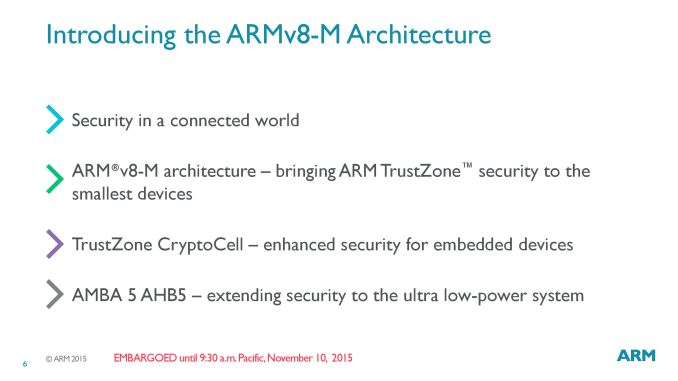
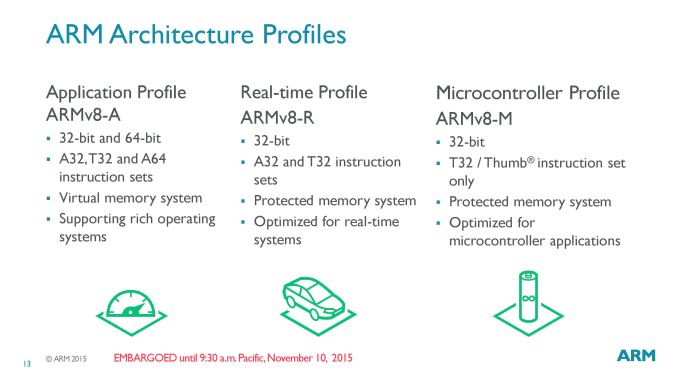
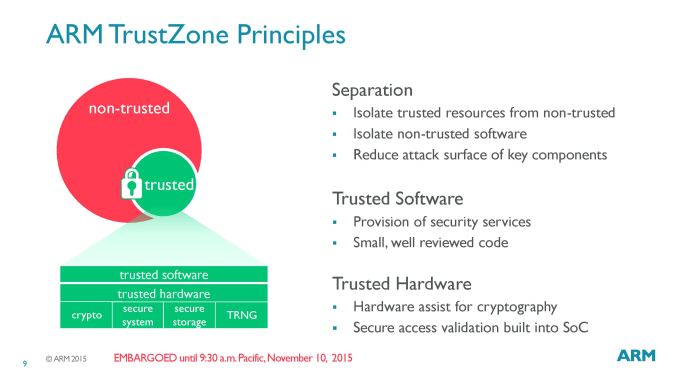
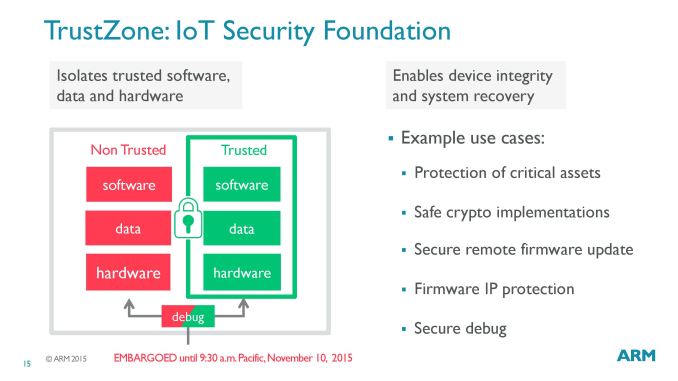
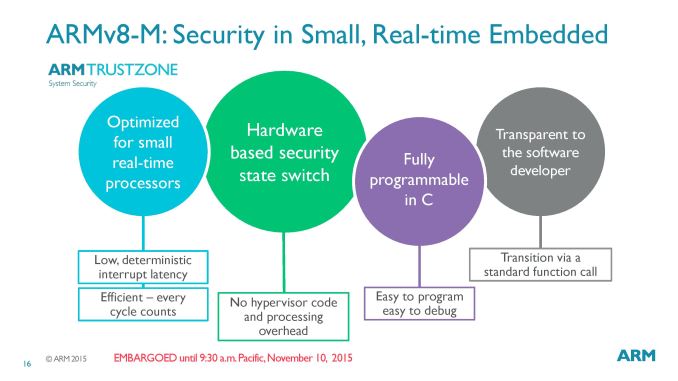

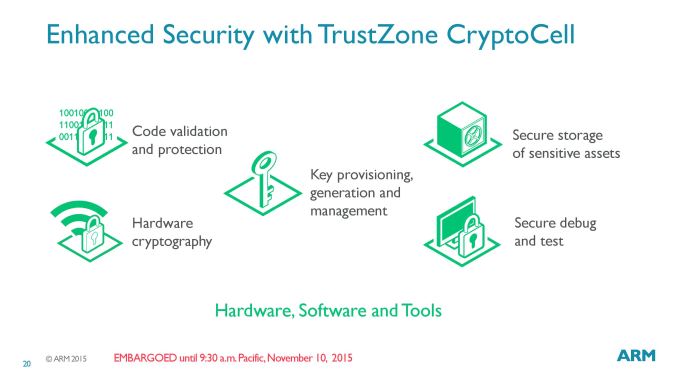
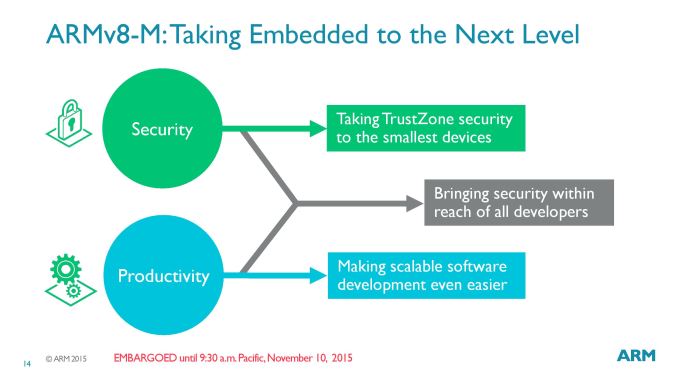

 Quote
Quote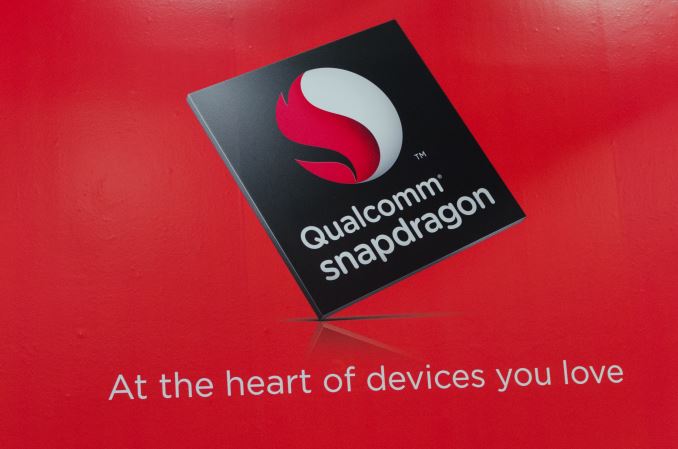
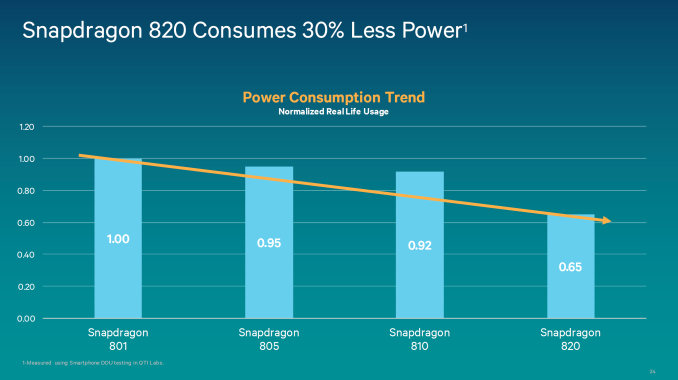

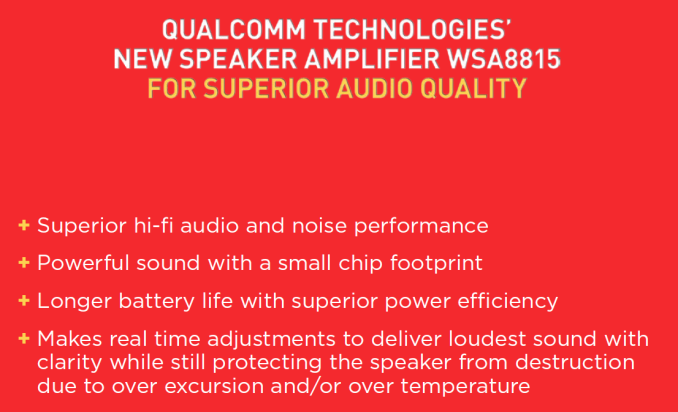

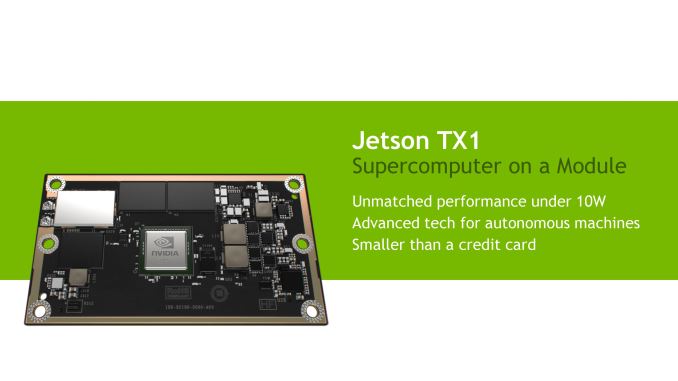
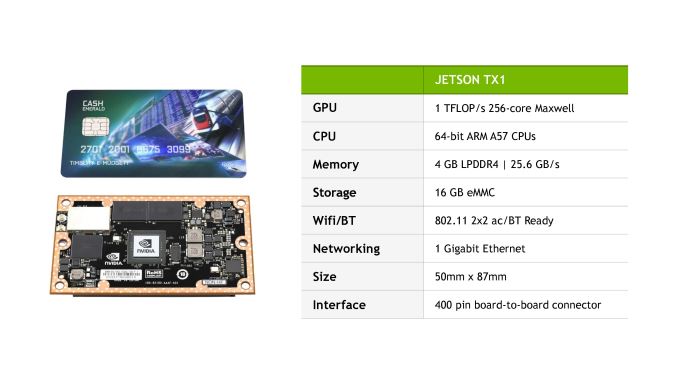
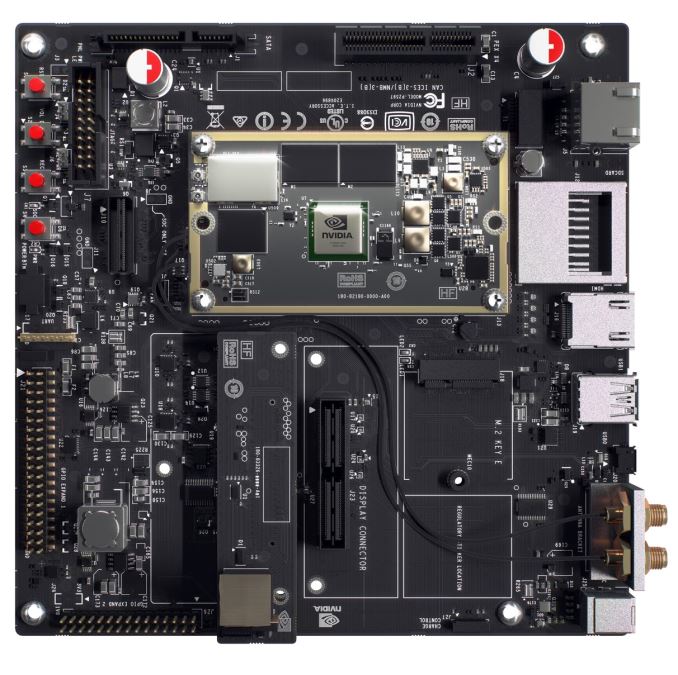
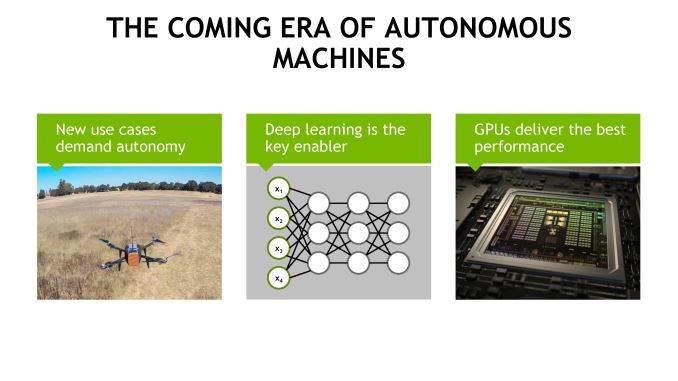
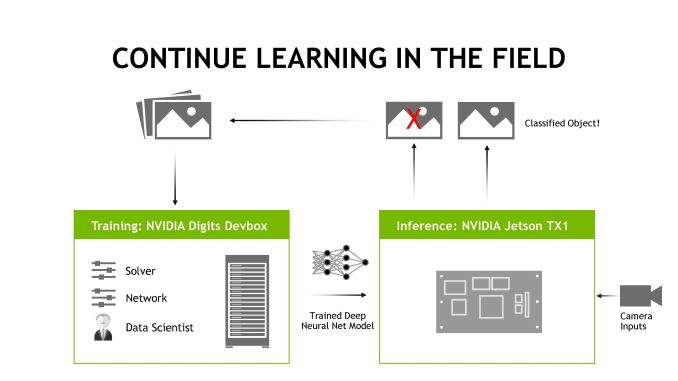
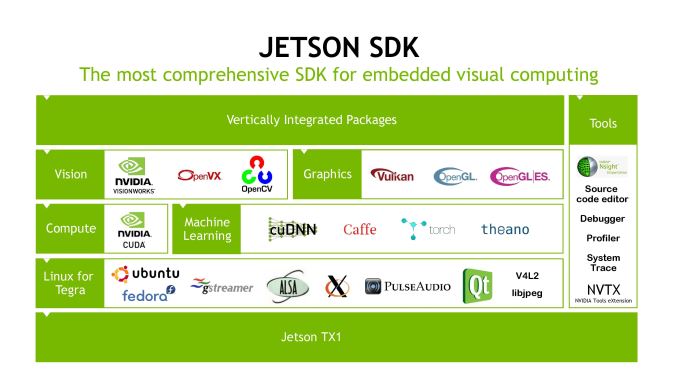
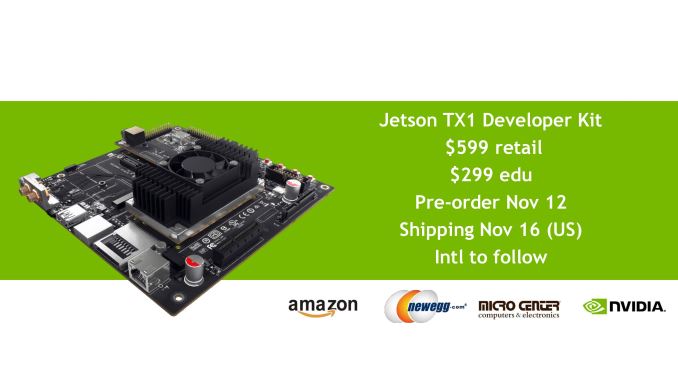
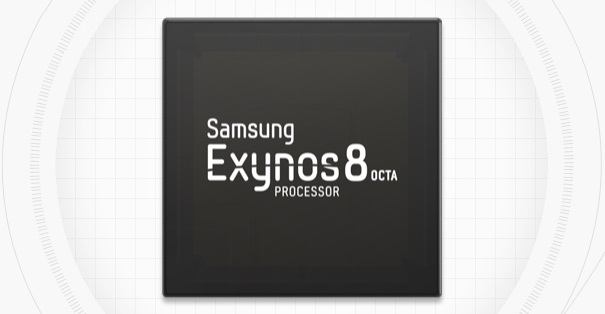
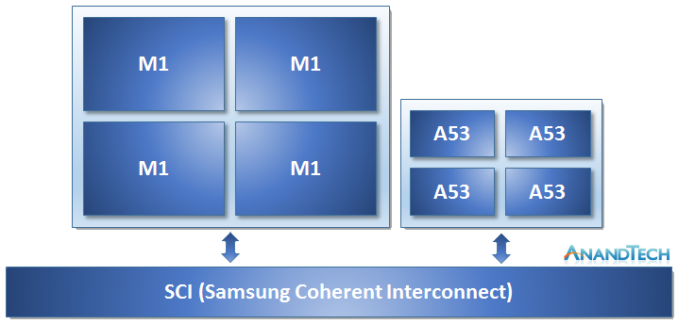
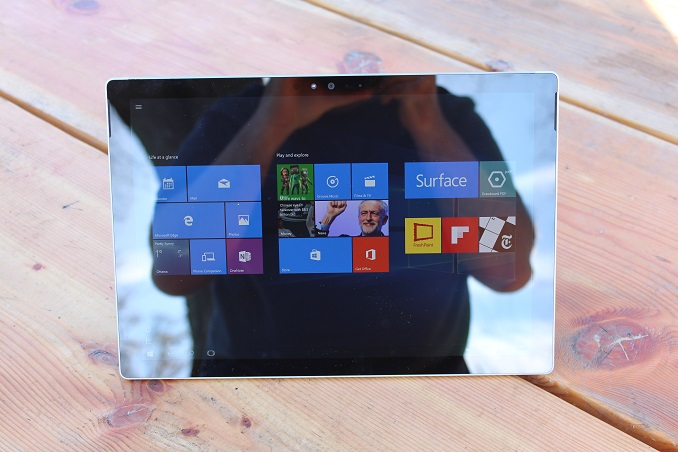

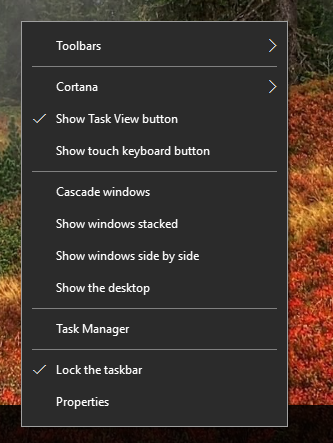
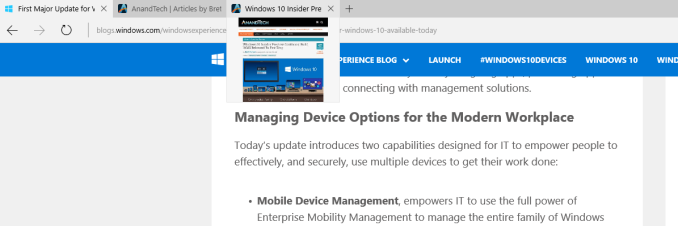


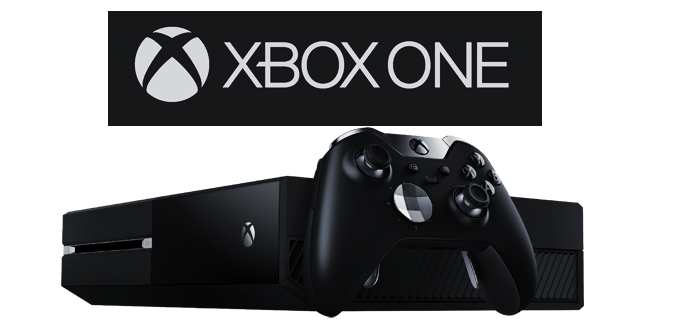




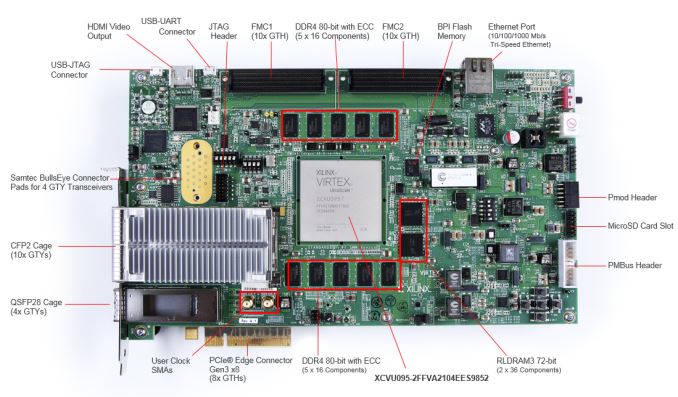
















Bookmarks